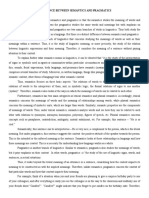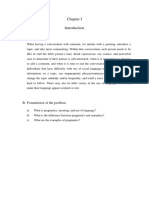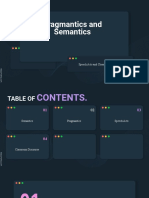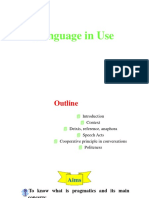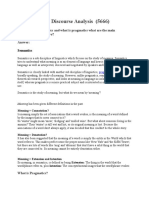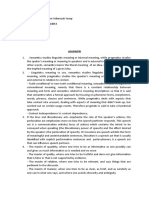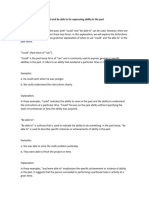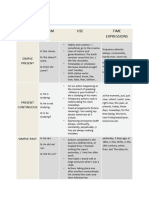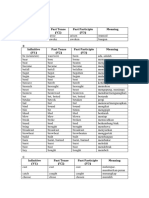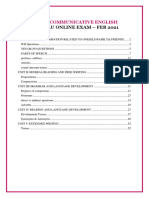0% found this document useful (0 votes)
42 views2 pagesDifference Between Pragmatics and Semantics: Example To Justify The Difference Sentence
Pragmatics is the study of how context influences the interpretation of meaning in language, differing from semantics, which focuses on literal meanings. For example, the phrase 'Can you pass the salt?' is a literal question in semantics but a polite request in pragmatics. Additionally, speech acts are categorized into locutionary (the act of saying), illocutionary (the intended meaning), and perlocutionary (the effect on the listener).
Uploaded by
shahzad9423736Copyright
© © All Rights Reserved
We take content rights seriously. If you suspect this is your content, claim it here.
Available Formats
Download as DOCX, PDF, TXT or read online on Scribd
0% found this document useful (0 votes)
42 views2 pagesDifference Between Pragmatics and Semantics: Example To Justify The Difference Sentence
Pragmatics is the study of how context influences the interpretation of meaning in language, differing from semantics, which focuses on literal meanings. For example, the phrase 'Can you pass the salt?' is a literal question in semantics but a polite request in pragmatics. Additionally, speech acts are categorized into locutionary (the act of saying), illocutionary (the intended meaning), and perlocutionary (the effect on the listener).
Uploaded by
shahzad9423736Copyright
© © All Rights Reserved
We take content rights seriously. If you suspect this is your content, claim it here.
Available Formats
Download as DOCX, PDF, TXT or read online on Scribd
/ 2







